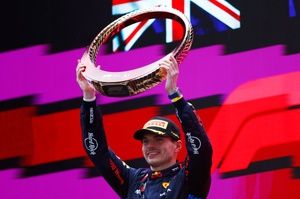The rear end overhaul that has transformed Red Bull
Red Bull’s crushing form over the Formula 1 season opening weekend in Bahrain is proof that it has got on top of the tricky aero anomalies that dogged its campaign last year.

Photo by: Giorgio Piola
Giorgio Piola's F1 technical analysis
Giorgio Piola is the preeminent Formula 1 technical journalist. View our full selection of Giorgio's technical illustrative content
The often unpredictable rear end of the RB16 proved a handful for both Max Verstappen and Alex Albon at times, but the evidence is clear that the RB16B is much more firmly planted.
Red Bull spent a large portion of last season focused on a rectification programme, as it discovered quite quickly that the RB16’s performance was flawed, owing to a correlation issue between its simulation tools back at the factory and the results delivered on track.
The team dug deep in the early part of the season and initially focused its attention on redesigning the car’s front end.
But, having fixed those issues and with new regulations cutting downforce at the rear of this year’s cars, the design team shifted its attention to nailing the rear end performance of the RB16B.

Red Bull Racing RB16B comparison rear suspension
Photo by: Giorgio Piola
Its primary focus was to improve the airflow’s transit over the rear of the car, with the team happy to be schooled by its rivals as its layout draws inspiration from the concept introduced by Mercedes last season.
However, it has added its own twist too as, whilst the entire lower suspension assembly has essentially been flipped over, with the trackrod mounted at the front, rather than the rear (blue in lower inset) it’s actually its lower wishbone design that’s altogether more interesting.
Much like the design at the front end of the cars in recent years, rather than have the conventional triangulation, Red Bull has created a multi-link lower wishbone arrangement for the RB16B.
This separation of the arms allows the designers to be more specific with their placement and enables them to place them in a position that more effectively meets their aerodynamic demands.
This is critical when we consider the regulation changes for 2021 which put an onus on the design of the car’s rear end.
With this in mind, Red Bull has raised the lower suspension elements and pushed them as far rearward as possible, in order to try and improve the space available for the airflow over the raised diffuser ceiling, into the coke bottle section and the channel beside the tyre’s sidewall and edge of the diffuser.

Red Bull Racing RB16B rear detail
Photo by: Giorgio Piola
Red Bull introduced a multi-link arrangement in 2019, with its upper wishbone sporting the splayed layout (left image, below).
For 2020 and again in 2021, the team opted for a conventional upper wishbone but switched to a multi-link arrangement for its lower wishbone (right image, below).

Red Bull Racing RB15 front suspension
Photo by: Giorgio Piola

Red Bull Racing RB16 front suspension
Photo by: Giorgio Piola
The never ending search...

Red Bull RB16B floor fin
Photo by: Uncredited
Red Bull already looked to be in good stead heading into the first round of the championship, with a solid performance during preseason testing that suggested it may be in line to dethrone Mercedes.
It arrived in Bahrain with another weapon in its arsenal though, as the team installed another fin on the floor ahead of the rear tyre (red arrow).
This fin has a distinctive curled edge which will undoubtedly have an impact on the airflow, with the vortex shed from it designed to work in harmony with the other fins already present on the floor around it.
The role of these fins has been increased for 2021, given the introduction of the floor cutout and the inability to use slots and fully enclosed holes in the floor that remains.
Each fin will have a specific role but contribute to turning airflow across and around the rear tyre in order to limit the turbulence it creates, which can be damaging to the performance of the diffuser if left untreated.

Red Bull Racing RB16B rear suspension
Photo by: Giorgio Piola
This illustration shows how quickly the team is reacting to the 2021 rule changes, with the mid floor fin and two outwardly angled fins only added to the RB16B during the preseason test.
Be part of Motorsport community
Join the conversationShare Or Save This Story
Related video
Subscribe and access Motorsport.com with your ad-blocker.
From Formula 1 to MotoGP we report straight from the paddock because we love our sport, just like you. In order to keep delivering our expert journalism, our website uses advertising. Still, we want to give you the opportunity to enjoy an ad-free and tracker-free website and to continue using your adblocker.


















Top Comments